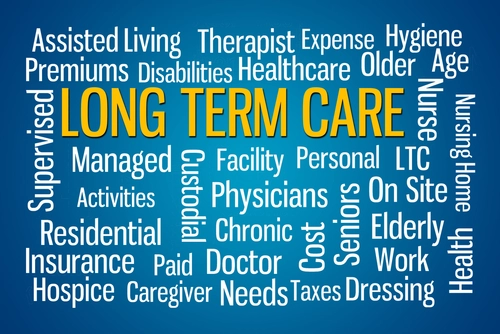EM Coding Alert
Get Your First Look at the New Medicare Prolonged/ Complex Service Codes
Learn the pros and cons of G2211 and G2212. Thanks to the Centers for Medicare & Medicaid Services’ (CMS’) 2021 Physician Fee Schedule (PFS) final rule, you’ll have two new HCPCS codes to use when you bill Medicare for prolonged or complex E/M visits this year. While that may seem like good news, each one presents its own challenge that may could affect your E/M coding negatively in 2021. So, we examined them to see what impact they could have, and here’s what we discovered. G2211 Pros … On the surface, G2211 (Visit complexity inherent to evaluation and management associated with medical care services that serve as the continuing focal point for all needed health care services and/or with medical care services that are part of ongoing care related to a patient’s single, serious condition or a complex condition. (Add-on code, list separately in addition to office/outpatient evaluation and management visit, new or established)) “is good news as you will be able to use this code with most of the office visit E/M services you bill to Medicare,” says Kent Moore, senior strategist for physician payment at the American Academy of Family Physicians. Indeed, CMS states that even though “practitioners that rely on office/outpatient E/M visits to report the majority of their services are not likely to report HCPCS add-on code G2211 with every office visit … we are assuming that utilization will be 90 percent of office/ outpatient E/M visits.” … and Cons However, exactly when the code should be used remains vague. “In the context of primary care, HCPCS add-on code G2211 could recognize the resources inherent in holistic, patient-centered care that integrates the treatment of illness or injury, management of acute and chronic health conditions, and coordination of specialty care in a collaborative relationship with the clinical care team,” CMS writes. The final rule goes on to elaborate that G2211 could be used for “active monitoring outside of office/outpatient E/M visits and are not captured in current coding,” including “oversight of medication refills; evaluating appropriateness of current and new medications, including those initially prescribed by other practitioners …; conducting medication-related monitoring and safety activities when these activities are not part of a visit …: and review[ing] of lab and imaging reports, including those requested by another practitioner, that fall outside the timeframe of an office/outpatient E/M visit, and do not necessitate a new visit.” This suggests that G2211 will be often be used with higher-level office/outpatient E/M visits, as the clinical vignette CMS uses as an example for the code in the final rule illustrates. The example describes an encounter with an older woman with multiple complex, chronic conditions where “the clinician adjusts the dosage of some of the patient’s medications … [and] orders laboratory tests …. In this clinical example, the practitioner is serving as a focal point for the patient’s care … by furnishing care for some or all of the patient’s conditions across a spectrum of diagnoses and organ systems with consistency and continuity over time.” G2212 Pros … CMS’ intent in introducing G2212 (Prolonged office or other outpatient evaluation and management service(s) beyond the maximum required time of the primary procedure which has been selected using total time on the date of the primary service; each additional 15 minutes by the physician or qualified healthcare professional, with or without direct patient contact (List separately in addition to CPT codes 99205, 99215 for office or other outpatient evaluation and management services) …) is to resolve their disagreement with CPT® over when service times for 99205 (Office or other outpatient visit for the evaluation and management of a new patient … 60-74 minutes of total time is spent on the date of the encounter) or 99215 (Office or other outpatient visit for the evaluation and management of an established patient … 40-54 minutes of total time is spent on the date of the encounter) enter prolonged territory. CPT®’s instructions for +99417 (Prolonged office or other outpatient evaluation and management service(s) beyond the minimum required time of the primary procedure which has been selected using total time, requiring total time with or without direct patient contact beyond the usual service, on the date of the primary service, each 15 minutes of total time (List separately in addition to codes 99205, 99215 for office or other outpatient Evaluation and Management services)) tell you to add the code onto 99205 or 99215 when these codes hit one minute beyond the maximum in their time ranges - 75 minutes for the new patient visit and 55 for the established. In the final rule, however, CMS has finalized their proposal that you add a prolonged code when the time for visits hits 15 minutes beyond the maximum time range for 99205 (i.e., 89 minutes) and 99215 (i.e., 69 minutes). To avoid the potential confusion with CPT® guidelines that this would cause, they have abandoned +99417 and replaced it with G2212. … and Cons CMS’ adoption of G2212 is unfortunate, however, as “it means primary care practices will have to bill Medicare differently for prolonged office visits than they do payers who follow CPT®. That means more administrative complexity, which is the last thing primary care practices need these days,” Moore notes.

Related Articles
EM Coding Alert
- News You Can Use:
Get Your First Look at the New Medicare Prolonged/ Complex Service Codes
Learn the pros and cons of G2211 and G2212. Thanks to the Centers for Medicare [...] - Coding Quiz:
Sharpen Your MDM Knowledge With This Quiz
Find out if your 2021 office/outpatient E/M savvy is up to speed. If you’re still [...] - Specialty Spotlight:
Know When, When Not, to Code Pap Services With Physicals
Medicare says yes; CPT® not so much. When your female patients report for their yearly [...] - Coding Quiz Answers:
Check Your Answers to Our MDM Coding Quiz
Time to find out how well you’re dealing with the 2021 office/outpatient E/M changes. Once [...] - Reader Questions:
Take This Counsel, Know if You Can Bill for COVID Advice
Question: Our practice is counseling a lot of Medicare beneficiaries about the importance of certain [...] - You Be the Coder:
Looking for an Admit Code? Think Again
Question: Our provider often does rounds at the hospital and the other day, he admitted [...] - Reader Questions:
Consult Guidelines Before Billing These Codes
Question: Our physician offered consultation services to a patient who was in treatment with another [...] - Reader Questions:
Use Dx to Separate Well Check from E/M
Question: A mother brings her daughter in for her four-year-old follow up after chemotherapy. Our [...]



